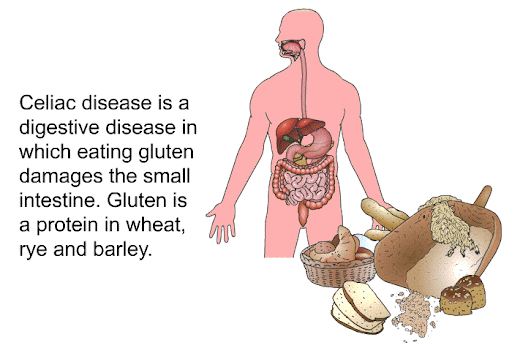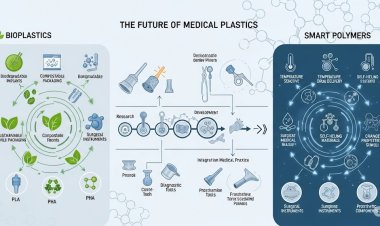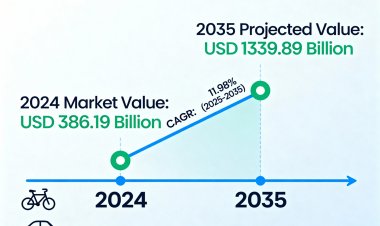Celiac Disease Market: Global Trends, Growth, and Forecasts to 2032
The global celiac disease market is valued at USD 600.2 million in 2023 and is projected to reach USD 1,404.72 million by 2032, representing a CAGR (compound annual growth rate) of 9.9% between 2024 and 2032. The rising incidence of celiac disease, particularly in developed regions, is driving market growth as more individuals seek effective management solutions.

Celiac Disease Market Highlights
- Celiac disease is an autoimmune disorder characterized by an adverse reaction to gluten, leading to damage to the small intestinal lining. This damage hinders the proper nutrient absorption from food, resulting in a range of symptoms. In more severe cases, it can lead to long-term health issues.
- In 2023, the gluten-free diet category, based on treatment, accounted for a significant market share of 39.5%.
- In 2023, the oral route of administration was the dominant force in the market, accounting for the largest market share of 59.8%.
- In 2023, North America held a commanding 36.5% market share, underscoring its dominant position in the market.
Market Introduction and Definition
Celiac disease (CD), also known as coeliac disease, is an autoimmune disorder where the ingestion of gluten — a protein found in wheat, barley, and rye — leads to damage in the small intestine. This condition triggers an immune response that causes damage to the lining of the small intestine. This leads to interference with nutrient absorption and a range of symptoms affecting the digestive and overall health. The symptoms include chronic diarrhea, weight loss, fatigue, joint pain and skin rashes. Without treatment, coeliac disease has the potential to cause serious health problems including osteoporosis, infertility and neurological disorders.
The Global Celiac Disease Market is comprised primarily of diagnostic tools, therapeutic treatments, and gluten-free food products. While the exact cause of celiac disease remains unclear, genetic factors combined with environmental triggers appear to play a key role. The growing recognition of the disease's prevalence, along with the increasing availability of gluten-free food products and treatment options, has spurred significant growth in this market. The demand for better diagnostic tools, effective therapies, and gluten-free food has led to the rise of numerous market players focusing on innovative solutions to cater to the needs of patients and health-conscious consumers alike.
The global celiac disease market is poised for steady growth driven by rising awareness, advances in diagnostic technologies, and the expanding gluten-free food market. A combination of factors, including increasing healthcare investments, rising disposable incomes, and growing consumer demand for specialized diets, is expected to fuel this growth. Additionally, the increase in healthcare research and improvements in healthcare infrastructure will contribute to the wider recognition of celiac disease, allowing earlier diagnosis and more targeted treatment options.
Request Sample Report of Celiac Disease Market @ https://www.vantagemarketresearch.com/celiac-disease-market-3190/request-sample
Key Takeaways
- Growing Awareness: The rising awareness of celiac disease is driving an increase in early diagnosis and expansion of the market for therapeutic products and gluten-free food.
- Diagnostic Advancements: The introduction of new diagnostic techniques, including blood tests and genetic screening, is improving the accuracy of celiac disease detection.
- The market for gluten-free food is experiencing a period of rapid growth, driven by the increasing prevalence of celiac disease and evolving consumer preferences.
- The market is seeing a growing number of drugs and treatments aimed at managing celiac disease more effectively, reflecting a strong pipeline of therapies.
- Regional Variations: The prevalence of celiac disease varies by geography, with higher rates in North America and Europe.
Market Dynamics
The celiac disease market is shaped by a variety of factors, including increasing awareness, evolving dietary trends, and advancements in medical technology. One of the most significant drivers of the market is the rising global awareness of celiac disease. Public health campaigns, as well as an increase in educational initiatives by medical professionals, have led to a greater recognition of the disease's symptoms and its long-term health implications. Early detection is essential for preventing complications, which has resulted in heightened demand for diagnostic tests and screening procedures.
Another significant factor is the growth of the gluten-free food market. As awareness of celiac disease increases, so does the demand for gluten-free alternatives. Furthermore, many consumers without celiac disease but with gluten sensitivities are also opting for gluten-free diets, which is driving additional growth in this market segment. In response to the growing demand, retailers and food manufacturers have expanded their gluten-free product offerings. Gluten-free snacks, baked goods, pasta, and other specialty foods are now widely available in supermarkets, offering consumers a range of healthier or allergen-free options.
Advancements in medical technology and pharmaceuticals are also a significant factor in the market's evolution. Over the years, there have been numerous breakthroughs in the treatment and management of celiac disease. Pharmaceutical companies are actively investing in the development of therapies that target the immune response triggered by gluten ingestion, offering hope for patients who find strict adherence to a gluten-free diet challenging. These advancements are not only improving the quality of life for patients but also opening up new revenue streams in the celiac disease treatment sector.
There has been a notable increase in the prevalence of celiac disease.
The incidence of celiac disease has been on a gradual upward trajectory, driven by a combination of heightened awareness and enhanced diagnostic techniques. Historically, celiac disease was often misdiagnosed due to its similarities to other gastrointestinal disorders, such as irritable bowel syndrome (IBS) or Crohn's disease. However, with the advent of more sophisticated diagnostic technologies, such as blood tests for specific antibodies and genetic tests, the identification of celiac disease is becoming more frequent. This has resulted in a notable increase in the number of diagnosed cases worldwide.
Furthermore, the increasing prevalence can be attributed to the growing awareness of the disease among both healthcare professionals and the general public. The increased accessibility to educational materials, along with the emphasis on prioritizing non-communicable diseases, has brought celiac disease to the forefront of medical research. Furthermore, studies suggest that environmental influences, including alterations in dietary patterns and early exposure to gluten, may be contributing to the rising incidence of celiac disease. As a result, both children and adults are being diagnosed at higher rates compared to previous generations.
The increase in prevalence has resulted in a surge in demand for healthcare services, diagnostic tests, gluten-free foods, and therapies aimed at managing the condition. The growth in diagnosed cases presents opportunities for healthcare providers, food manufacturers, and pharmaceutical companies to expand their offerings and cater to the needs of the growing patient population.

Track market trends LIVE & outsmart rivals with our Premium Data Intel Tool: Vantage Point
Market Segmentation
The celiac disease market can be segmented based on a number of factors, including diagnosis type, treatment, distribution channel, and geography. Diagnosis involves a variety of tests, including serological tests (blood tests), genetic tests, and biopsy procedures. Of these, serological tests, which detect antibodies specific to celiac disease, represent a significant share due to their non-invasive nature and accuracy.
In terms of treatment, the market is divided into drug-based therapies and gluten-free dietary products. The gluten-free food products sector, which ranges from bakery items to packaged meals, is currently in the lead in terms of market share. This is largely due to the fact that people with celiac disease are required to strictly avoid gluten-containing foods. Pharmaceutical companies are focusing on developing new enzyme-based therapies and immune-modulating treatments that could potentially offer patients more flexibility, thereby reducing the reliance on a strict gluten-free diet.
By Treatments
- Larazotide Acetate
- Gluten Free Diet
- Others
The market is segmented based on distribution channel, comprising online stores, retail pharmacies, and hospitals/clinics. The retail sector is the dominant player in this segment, offering consumers convenient access to gluten-free products. However, online shopping platforms are experiencing rapid growth, driven by the convenience they provide.
By Distribution Channel
- Hospital Pharmacy
- Online Pharmacy
- Retail Pharmacy
Buy Now Our Celiac Disease Industry Report @ https://www.vantagemarketresearch.com/buy-now/celiac-disease-market-3190/0
Regional/Country Market Outlook
The celiac disease market is experiencing significant growth across various regions, driven by an increasing awareness of the condition, improvements in diagnostic methods, and the rising demand for gluten-free products. The market is geographically segmented into North America, Europe, Asia-Pacific, Latin America, and the Middle East & Africa.
The following section provides a detailed analysis of the celiac disease market by region:
- North America: Leading market with advanced diagnostic tools and high awareness.
- Europe: Significant market share due to robust healthcare infrastructure.
- Asia-Pacific: Rapid growth expected due to increasing awareness and improving healthcare facilities.
- Latin America: Growing market with rising prevalence and improving diagnostics.
- Middle East & Africa: Emerging market with potential for growth as awareness increases.
Industry Trends
- The gluten-free product range is experiencing significant expansion. Food companies are focusing their efforts on producing a diverse range of gluten-free options, including snacks, ready meals, and beverages.
- Technological innovations in diagnostics are facilitating more accurate and accessible early diagnosis of celiac disease through advancements in genetic testing and serological diagnostics.
- The advent of personalized medicine and immune-modulating therapies is facilitating the development of targeted treatments for celiac disease.
- The increased consumer focus on health and wellness has led to a growing demand for gluten-free products, which are beneficial for individuals with celiac disease and those with gluten sensitivities.
Competitive Landscape
The competitive landscape of the celiac disease market is characterized by the presence of several key players, including Amgen, Anokion SA, BioLineRx Ltd, ChemoCentryx, Inc, COUR Pharmaceutical, F. Hoffmann-La Roche Ltd, ImmunogenX, LLC, Innovate Biopharmaceuticals, Takeda Pharmaceutical Company Limited, and Teva Pharmaceutical Industries Ltd. These companies are engaged in active research and development to bring new and effective treatments to market. It is not uncommon for companies to form strategic alliances, merge, or acquire other businesses in order to strengthen their market position. The competitive environment is also influenced by the introduction of innovative diagnostic tools and gluten-free products, which address the growing demand from patients and healthcare providers.
There is a significant presence of key players in both the gluten-free food and pharmaceutical sectors. The gluten-free food market is dominated by major food manufacturers, including General Mills, Nestlé, and Dr. Schär. These companies have expanded their product lines to include a variety of gluten-free options, capitalizing on the growing demand among both celiac patients and health-conscious consumers.
In the pharmaceutical sector, companies such as ImmunoBiochem, Glutenberg, and Alba Therapeutics are making significant progress in developing treatments and drugs that could potentially reduce the immune response triggered by gluten ingestion. These companies are investing heavily in research and clinical trials to bring innovative therapies to market. Additionally, companies specializing in diagnostic tools, such as Thermo Fisher Scientific and Abbott Laboratories, are focusing on creating more accurate and affordable testing methods.
Companies Covered
• Asia Pacific Amgen
• Anokion SA
• BioLineRx Ltd
• ChemoCentryx Inc. COUR Pharmaceutical
• F. Hoffmann-La Roche Ltd
• ImmunogenX
• LLC
• Innovate Biopharmaceuticals
• Takeda Pharmaceutical Company Limited
• and Teva Pharmaceutical Industries Ltd.
Please refer to our latest press release, which provides an in-depth analysis of the Celiac Disease Market.
Recent Key Strategies and Developments
- Abbott Laboratories launched a new, advanced serological test for the early detection of celiac disease, improving diagnostic accuracy.
- ImmunoBiochem received funding to advance its development of enzyme-based therapies aimed at treating celiac disease.
- General Mills expanded its gluten-free product line by introducing gluten-free versions of popular snack foods and baking products.
- Alba Therapeutics initiated clinical trials for a drug designed to treat gluten intolerance in people with celiac disease.
Key Benefits for Stakeholders
- For Patients: Access to more accurate diagnostics and effective treatments that improve quality of life and reduce long-term complications.
- For Healthcare Providers: Growing demand for better diagnostic tools and therapeutic options presents opportunities for service expansion and specialization.
- For Food Manufacturers: Increasing consumer demand for gluten-free foods opens up a lucrative market for innovative and diverse product offerings.
- For Pharmaceutical Companies: The development of effective treatments for celiac disease presents significant commercial opportunities, particularly with personalized medicine and immune-modulating therapies.
â Contact us:
Vantage Market Research
224 W 35th St Ste 500 New York,
NY 10001 United States
United States Tel: +1 (212) 951-1369
â Email: [email protected]
???? Website: https://www.vantagemarketresearch.com


















